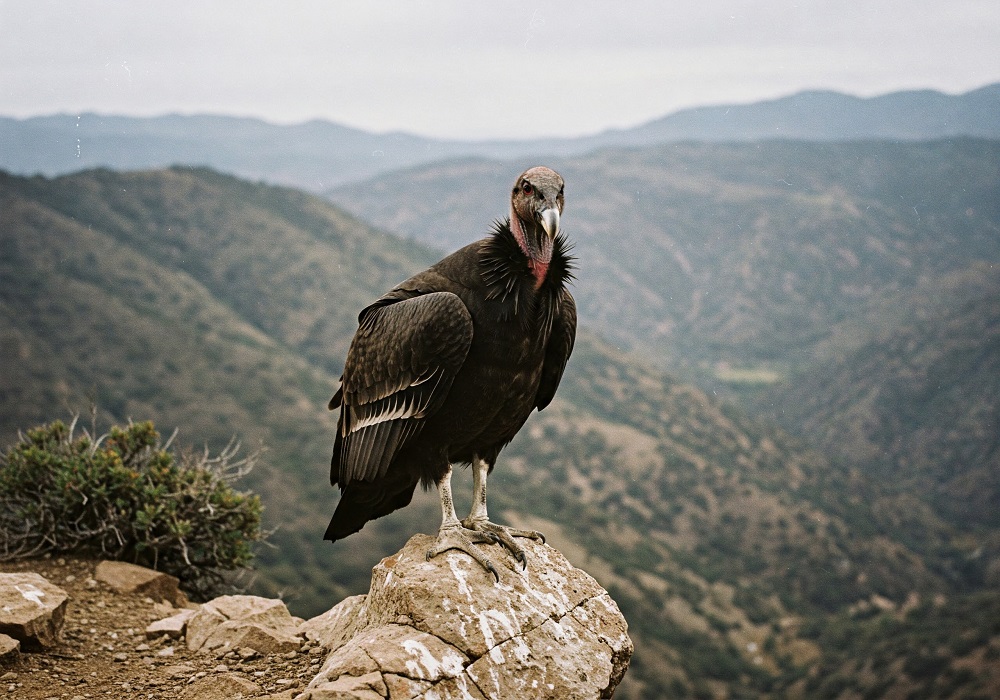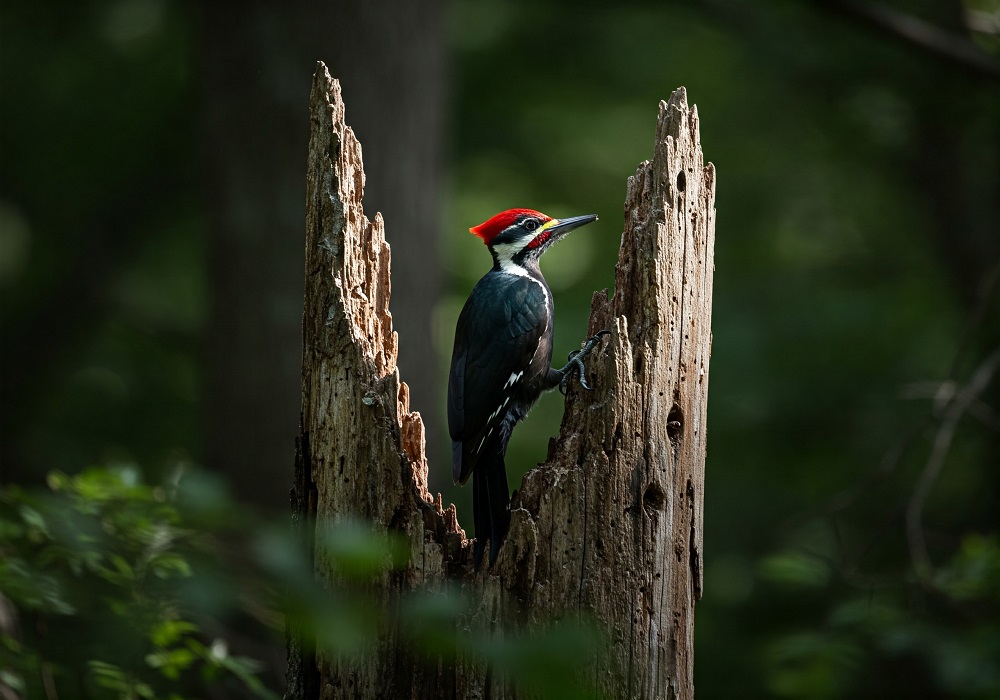What do you know about these endangered animals?
All around the globe, from the dense rainforests of South America to the large landfills of Asia and the mesmerizing mountains of the USA, wildlife is under great pressure. Climate change and human activity destroy and pollute the habitats of many animals, and this puts them in danger.
At this moment, more than one-third of native wildlife in the United States faces the threat of extinction. Unfortunately, this is a sober reminder that no species is safe against the destruction produced by humans.
All animals, no matter how small or big they are, play a key role in maintaining the balance of the ecosystem, and this is exactly why it is so important to protect them. Doing this is a crucial step in preserving biodiversity and the health of the world we know today.
Get ready to discover more about the most endangered animals in North America. Each of them faces unique threats, and knowing more about it could actually save their life. Let’s work together towards a better future!

California condor
This is North America’s largest flying bird, having an impressive wingspan of 2.75 to 3 meters (9 to 10 feet)! The California condor is a carnivorous scavenger bird, which means it prefers to consume carcasses of large mammals such as cattle and deer.
In the past, these birds occupied a large portion of America, but now we can only find them in central and southern California deserts, with populations also present in Arizona, Utah, and Mexico.
The International Union for Conservation of Nature (IUCN) classified the California condor among the endangered animals because the population levels dropped drastically in the 20th century. For example, in the 1980s there were only 27 of these birds alive! At this moment, after years and years of conservation efforts, there are 561 condors, with 347 of them being free in the wild and 214 remaining safe in captivity.
An interesting fact is the reasons they have become endangered animals. It is all due to lead ammunition. They get lead poisoning from eating carcasses of various animals, and as a response to this, California implemented a ban on lead ammunition for hunting in 2019.
Black-footed ferret
This small and cute ferret is actually a carnivorous mammal, the only ferret native to North America, and also one of the most endangered animals on this continent. They prefer shrublands and grasslands, and this is why we can find most of them inhabiting South Dakota, Wyoming, and Arizona.
Their trademark is probably the “bandit mask” they proudly wear on their faces and also the light and slick fur. These ferrets are slender and can measure up to 63 centimeters (head to tail).
90% of a black-footed ferret’s diet is constituted by prairie dogs. Back in the 20th century, there were more prairie dog eradication programs led by agricultural interests, and this drastically reduced the ferret population because they had nothing left to feed on.
By 1979, the black-footed ferret was thought to have become extinct in the wild. However, a remaining population was identified near Meeteetse, Wyoming, in 1981, motivating the US Fish and Wildlife Service to launch a captive breeding program.
Despite these efforts, this ferret is still one of the most endangered animals in North America, with approximately 370 individuals in the wild. Unfortunately, the numbers still seem to be decreasing, which means in a few years there is a high chance this species will be truly extinct.
North Atlantic right whale
This is a slow-moving baleen whale that can measure up to 60 feet and weigh around 233,690 pounds! They are majestic creatures that inhabit the Atlantic Ocean and prefer diving into the deep waters where they can find zooplankton, krill, and other small crustaceans to eat. When calving seasons begin, they migrate to more shallow waters.
The International Union for Conservation of Nature (IUCN) classified these whales as one of the endangered animals of America since their population has declined massively lately. At this point, there are only 356 individuals remaining, and only 70 of them are females able to reproduce.
What makes the lives of these creatures so dangerous, you might wonder? Well, mainly human activity, such as vessel strikes and entanglement in fishing gear. Even more climate change is to blame for altering ocean temperatures and currents, which can mess with whales’ prey distribution, making them go to areas with more human activity.
At this moment, there are ongoing conservation efforts that are trying to mitigate the effects of these threats. Speed restrictions for vessels, modifying fishing gear to reduce entanglement risks, and monitoring the movements of the whales are just a few of them.
Red wolf
Back in the day, red wolves used to be found in the eastern and southern United States. Today, they live only in some regions of North Carolina, where they inhabit various habitats from forests and swamps to coastal prairies.
They are a member of the canine family and are carnivores; their main diet consists of white-tailed deer, raccoons, rabbits, and other small mammals.
In 1980 they were declared extinct in the wild, but in 1987 they were reintroduced in North Carolina after a captive breeding program. The International Union for Conservation of Nature (IUCN) still classifies them as one of the most endangered animals in North America despite all of the efforts to help them breed in the wild. According to recent estimates, about 20-30 adult animals remain in the wild, and, unfortunately, the population continues to shrink.
One of the main threats to the red wolf is their hybridization with coyotes. This is a huge genetic risk and has diluted their wolf lineage. Then we need to be aware that they are the victims of landowners who sometimes kill them for invading their property. Vehicle strikes have become a notable threat lately, and this is especially true for the roads that intersect with their habitats.

Ivory-billed woodpecker
This is a bird that we all know, and all of this is due to the fact that it is easily recognizable. That prominent red crest male can be seen from miles away and is what has made this bird famous. This is also the largest woodpecker in the US, measuring 18 to 20 inches in length, and it has a wingspan of 30 to 31.5 inches.
In the past, the ivory-billed woodpecker lived in old-growth woods and wetlands spanning the southern United States and parts of Cuba. The favorite food of the ivory-billed woodpecker is made up of the insects found in the dead wood of trees.
In the 19th and early 20th centuries, people wanted more space for agriculture, and this led to extensive logging and land clearing. This means less wood for these birds, so less food. This has caused a significant decline in their population, and this is how they are now one of the most endangered animals in North America.
By the mid-20th century, the species was believed to be extinct. But, in 2004, someone reported a sighting in the Big Woods region of eastern Arkansas. The species managed to survive somehow. Unfortunately, these sightings were rare, and in 2021 the Fish and Wildlife Service proposed declaring the species extinct.
Despite this, certain researchers and birdwatchers continue to record unverified encounters with the ivory-billed woodpecker. This gives us hope that this bird is still around.
If you want to learn more about this book might be perfect for you: Vanishing Treasures: A Bestiary of Extraordinary Endangered
You should also read: The Top 6 Most Dangerous Animals in the US












